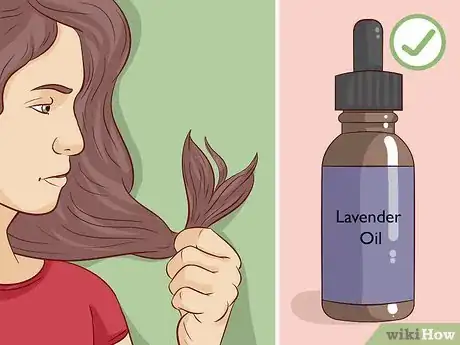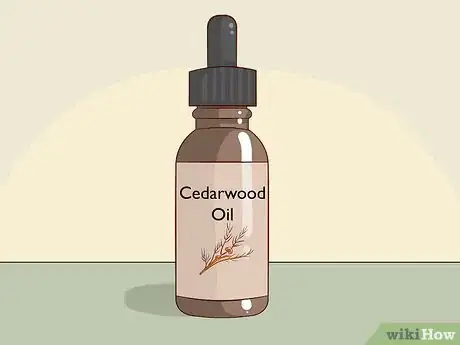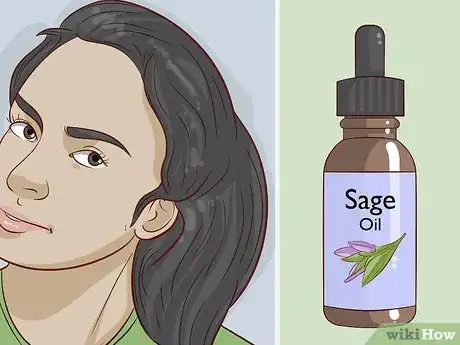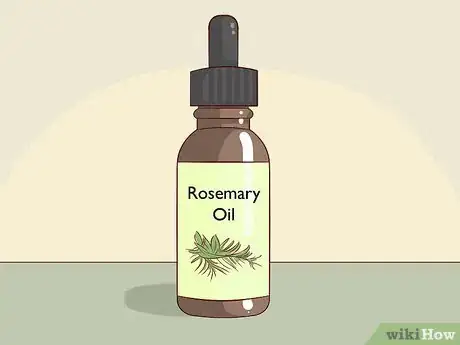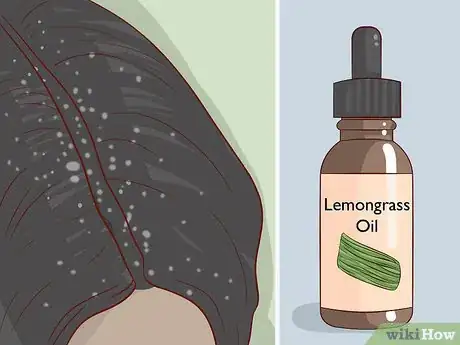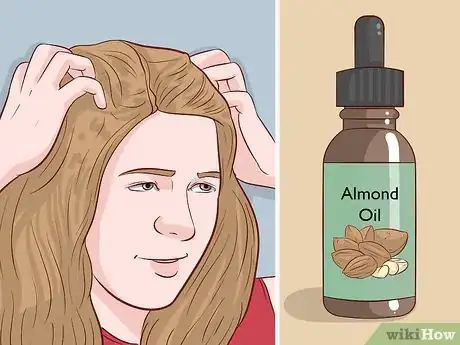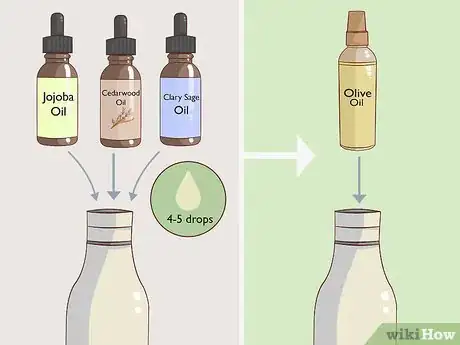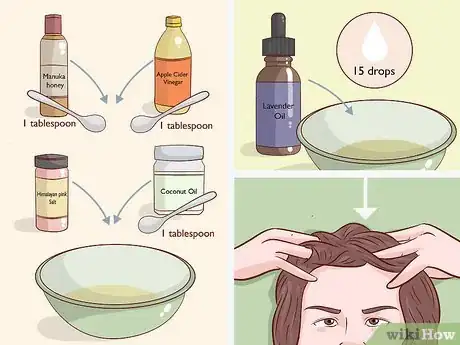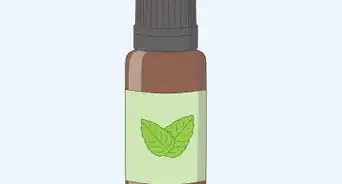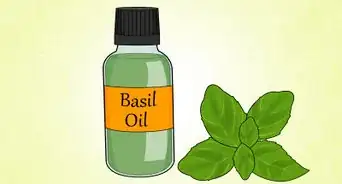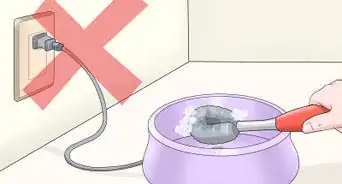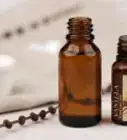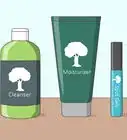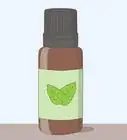This article was co-authored by Renee Hughes and by wikiHow staff writer, Janice Tieperman. Renee Hughes is a Certified Professional Aromatherapist and the CEO of The Aromaspecialists. With more than seven years of experience, she specializes in teaching others how to use aromatherapy and become certified aromatherapists. Renee received her training from The New Eden School of Natural Health and Herbal Studies. She is also a Level 2 National Association for Holistic Aromatherapy (NAHA) Certified Professional Aromatherapist and a NAHA Approved School Educator.
This article has been viewed 18,831 times.
While essential oils are commonly used to make your home smell nice, they can also be a nourishing, aromatic addition to your hair care routine. Before making any changes to your hair products, choose an essential oil that would benefit your hair type the most. Next, add at least several drops of oil to the shampoo, conditioner, hair serum, or scalp scrub of your choice. With the repeated use of these ingredients, you might notice a positive difference in your grooming routine!
Things You Should Know
- Choose an oil based on your hair goals—lemongrass oil is good if you have dandruff, while rosemary oil may be a good option if you're trying to grow your hair out.
- The easiest way to apply the essential oils is to mix 10-20 drops of oil into 8 oz of shampoo or conditioner.
- For a more concentrated treatment, make your own hair serum by adding 4-5 drops of essential oil to 2 oz of a carrier oil.
- If your scalp is inflamed, try soothing it with a homemade essential oil salt scrub.
Ingredients
Basic Hair Serum
- 4-5 drops of essential oils
- 2 fluid ounces (59 mL) of carrier oil
Makes 1 serving
Simple Apple Cider Vinegar Scalp Scrub
- ¼ cup (70 g) of Himalayan pink salt
- 1 tablespoon (15 mL) of apple cider vinegar
- 1 tablespoon (15 mL) of coconut oil
- 1 teaspoon (4.9 mL) of Manuka honey
- 15 drops of essential oil
Makes 1 serving
Steps
Choosing the Best Essential Oil for Your Hair’s Needs
-
1Opt for lavender oil if you have dry hair. First, examine your scalp and hair for signs of dryness and flakiness. If your hair feels consistently dry and damaged, check your local drug store or vitamin shop for bottles of lavender or geranium oil. When added to a shampoo, conditioner, hair serum, or scalp scrub, these oils can make up for the lack of oil production in your scalp.[1]
- Chamomile, geranium, sandalwood, and rose oil are also great products to use with dry, damaged hair.[2]
-
2Use cedarwood, clary sage, or jojoba oil to stimulate your scalp. To keep your hair healthy, opt for essential oils that encourage circulation throughout your scalp. To do this, check your local vitamin or drugstore for bottles of jojoba, clary sage, or cedarwood oil. When combined, you can make an effective hair serum with these ingredients.[3]
- Jojoba oil offers a lot of nutrients to your hair and also serves as an excellent moisturizer.
- Cedarwood and clary sage oil can both help to promote hair growth.
- Scalp stimulation and massages encourage more blood flow, which can promote healthy hair growth.[4]
Advertisement -
3Seek out sage oil if your hair is oily. Check your hair, roots, and scalp to see if you have any extra greasiness or natural oil content in your hair. While some hair products combat this issue, you can provide extra nourishment to your hair by adding sage oil to your hair care routine. If you prefer a different scent, peppermint and lemon essential oil can also help lessen your oily hair.[5]
- Geranium and juniper oil are also viable options.
- Sage oil is often referred to as “clary sage.”
-
4Select rosemary oil to help promote hair growth. While there’s no instantaneous cure for balding or hair loss, you may see positive hair growth results by including rosemary oil in your shampoo, conditioner, or other hair treatments. If you don’t like the scent of rosemary, you might find success with peppermint or lavender oil as well.[6]
- Cedarwood and clary sage oil can also promote hair growth when used in topical treatments.
-
5Invest in lemongrass oil if you have a lot of dandruff. Examine your hair roots and strands for any obvious dandruff flecks, which are signs of a flaking scalp. If you’re suffering from this condition, try adding lemongrass oil to your natural hair products and treatments. If your dandruff is caused by a yeast overgrowth, you might be successful with this particular essential oil.[7]
- Tea tree, rosemary, and peppermint oil can also help fight dandruff naturally.
-
6Soothe your scalp with almond or chamomile oil. Check between your hair strands to search and feel for dry skin, discomfort, and other signs of scalp inflammation. If your scalp is perpetually itchy, try using almond or chamomile oil to address the issue. These ingredients can also help with dermatitis-related issues in your scalp.[8]
- If you’re suffering from dermatitis, try using tea tree, rosemary, and lavender oils instead.[9]
Applying the Product to Your Hair
-
1Mix up to 10-20 drops of essential oil into a small bottle of shampoo or conditioner. Find an 8 fluid ounces (240 mL) bottle of unscented shampoo and/or conditioner and set it aside. Next, pour 10-20 drops of your desired essential oils into your shampoo or conditioner bottle, then shake to combine the ingredients. Use your enhanced shampoo and conditioner on a regular basis to boost your usual hair care routine.[10]
- If you have dry hair, combine 10 drops of essential oil with 1 tablespoon (15 mL) of olive, coconut, or jojoba oil, then stir the mixture into the shampoo.
- If you have oily hair, mix 20 drops of essential oil with 1 teaspoon (4.9 mL) of bentonite clay into the shampoo.
- Use 15 drops of essential oils to promote hair growth, and 20 drops when fighting dandruff.
- Only use your shampoo and conditioner 2-3 times a week to prevent your hair from drying out.[11]
-
2Combine 4-5 drops of essential oils with a carrier oil to create a nourishing hair serum. Pour several drops of jojoba, clary sage, and cedarwood oil into a small bottle. Next, add in 2 fluid ounces (59 mL) of a carrier oil, like olive or coconut, into the mixture. Pour the serum into your hands, then massage the mixture through your hair and roots. Let the serum soak in by wrapping a towel around your hair, then rinse out the serum after 30 minutes.[12]
- You can go to bed with the serum soaking in your hair, then shampoo and rinse it out in the morning.
- Use this treatment whenever you'd like to provide your hair with some extra nourishment.
- If you have natural hair, consider using a leave-in conditioner after trying out the serum.
- This serum helps to nourish your hair. You can also use lavender oil in your mixture instead of jojoba oil.
-
3Add 2-3 drops of essential oils to a scalp-soothing scrub. Mix ¼ cup (70 g) of Himalayan pink salt, 1 tablespoon (15 mL) of coconut oil, 1 tablespoon (15 mL) of apple cider vinegar, and 1 teaspoon (4.9 mL) of Manuka honey together in a bowl. Next, add in 15 drops of a soothing essential oil, like lavender or chamomile. Massage the scrub gently into your scalp, then let the mixture soak into your scalp for at least 5 minutes. Finally, rinse your hair in warm water and shampoo it as you normally would.[13]
- Use this scrub whenever your scalp feels uncomfortable or inflamed. If your scalp is especially sensitive, switch out the pink salt for a finer alternative.
Things You’ll Need
- Essential oils (of your choice)
- Unscented shampoo or conditioner
- Jojoba, coconut, or olive oil (carrier oils)
- Bentonite clay
- Conditioner (optional)
References
- ↑ https://www.webmd.com/beauty/natural-oils
- ↑ https://helloglow.co/the-best-essential-oils-for-hair-how-to-use-them/
- ↑ https://www.webmd.com/beauty/natural-oils
- ↑ https://www.ncbi.nlm.nih.gov/pmc/articles/PMC4740347/
- ↑ https://www.yogajournal.com/yoga-101/essential-oil-mixology
- ↑ https://helloglow.co/the-best-essential-oils-for-hair-how-to-use-them/
- ↑ https://helloglow.co/the-best-essential-oils-for-hair-how-to-use-them/
- ↑ https://www.webmd.com/beauty/natural-oils
- ↑ https://helloglow.co/the-best-essential-oils-for-hair-how-to-use-them/
